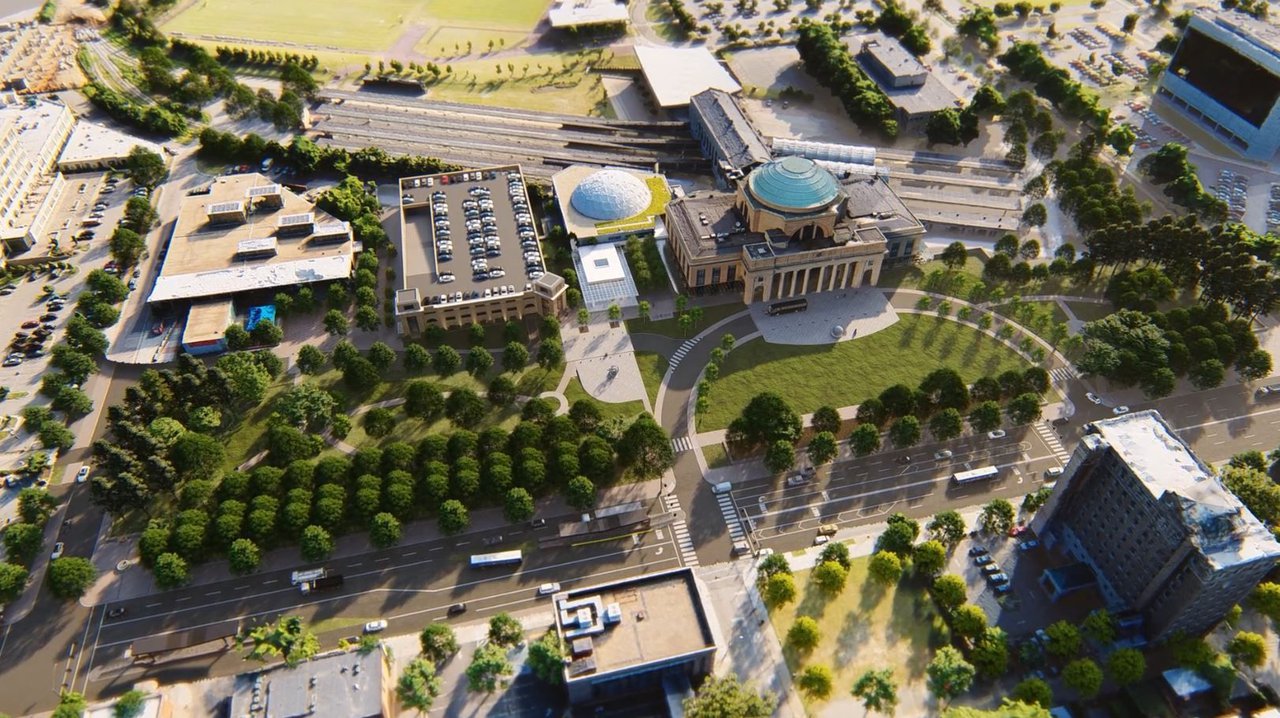The Green at the Science Museum of Virginia
In May 2023, the Science Museum opened the first section of its new community greenspace called The Green. The public can enjoy the urban park’s natural beauty as well as environmental and health benefits.
Who Will Benefit?
The parcel is set on the Science Museum of Virginia's 37-acre campus, which is home to both the Science Museum and the Children’s Museum of Richmond. A popular destination located along one of the busiest corridors into downtown, the site attracts 700,000 visitors each year and is accessible via public transit. In 2019, 100,000 passengers boarded or exited the Pulse bus rapid transit stop at the Science Museum.
More than 6,000 residents live within a half mile of The Green in two of the city’s most densely populated neighborhoods. Thousands more work within close walking distance along Broad Street’s rebounding commercial district. Directly across Broad Street from the site is the historic William Byrd Hotel, retrofitted as 106 apartments for older adults with low incomes.
Museum guests, public transit passengers and individuals who live and work nearby will benefit from time spent on the shaded paths and in the casual gathering areas within the only public park located along the 7.6-mile Pulse corridor.
Reducing the Impacts of Land Use While Mitigating the Effects of Climate Change
The Green aligns with the city’s Richmond 300 comprehensive master plan, which prioritizes green infrastructure for Greater Scott’s Addition. As one of the fastest-growing, high-density, mixed-use neighborhoods in the city, the district suffers from one of the lowest levels of urban tree cover in Richmond. Native trees and plants play a key role in achieving The Green’s design goals and desired environmental and health benefits. A block-long, tree-lined allée paralleling Broad Street enhances the pedestrian experience along this busy thoroughfare while buffering traffic activity, sequestering carbon and managing stormwater. The Green preserves sight lines for architect John Russell Pope’s iconic design of Broad Street Station.
In total, 20 of our 37 acres will become greenspace, which will help reduce greenhouse gas emissions by 45% by the year 2030 and achieve net zero greenhouse gas emissions by 2050.
Improving Community Health
While the acreage behind the Science Museum is dedicated to organized programming and recreation, the The Green was planned with passive recreation in mind. ADA-accessible paths and casual seating areas, shaded by overstory and understory trees, provide opportunities for guests to gather, exercise, reflect and connect. Research underscores the multiple mental and physical benefits of spending time in nature.
Delivering Educational Benefits and Community Well-Being
The Green serves as both a new civic gathering space for the broader community and a place to apply and demonstrate STEM lessons about the positive impact green infrastructure can make on the environment, wildlife, human health and social connectedness.

Interested in Supporting The Project?
